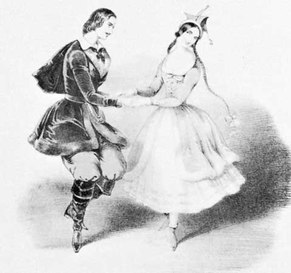Musical terms, tempi
For a start, an interesting experiment with mechanical metronomes: click the link
Tempi and the metronome
The tempo a piece is played on is significant for the kind of music it stands for. Therefor the tempo is written down at the beginning of a score, at least in most occasions. Often it does happen that the wanted tempo is indicated using a musical term. So it is good that we do know that Lento does mean slow, and Allegro stands for fast, but yet this does not tell us how to set the metronome. For avoiding this problem we do give a list with the most common tempo terms and the number of beats/minute they stand for. Take note that the number of beats is only an indication!
The tempo a piece is played on is significant for the kind of music it stands for. Therefor the tempo is written down at the beginning of a score, at least in most occasions. Often it does happen that the wanted tempo is indicated using a musical term. So it is good that we do know that Lento does mean slow, and Allegro stands for fast, but yet this does not tell us how to set the metronome. For avoiding this problem we do give a list with the most common tempo terms and the number of beats/minute they stand for. Take note that the number of beats is only an indication!
slow tempo
Fast tempo
Tempo related to a type of dance (indicative)
|
Walzes
English walz: 40 - 60 Slow Walz: 84 - 90 Viennese Walz 160 - 180 March funeral: 60 modern: 120 Brittish march: 88 - 112 German march: 110 strict tempo Swedish march: 110 - 112 circus march, or "screamer": 140 - 200 6/8 march: 80 - 84 4/4 march: 84 - 90 2/4 march: 84 - 90 |
slow air: 52 - 58
jig: 124 - 128 hornpipes moderate tempo: 104 - 110 slow hornpipe: 70 - 98 fast hornpipe: 155 - 180 reel: 94 - 120 Tango tango: 105 - 140 |
Indications for a changing tempo
|
accelerando (acc.): accelerative, progressively faster
a tempo: back to the tempo from before the tempochanging assai: much, very, quite calando: getting slower and quieter l'istesso tempo: the same tempo molto: much meno mosso: less agile, less moving piu mosso: more moving, faster poco: a little poco a poco: little by little rallentando (rall.): progressively slower ritardando (rit.): slowing down ritenuto: suddenly slower, held back (more temporarily than ritardando), may apply to one single note rubato: flexible in tempo. The tempo can get faster and slower in one measure: expressive effect stringendo: gradually getting faster and louder tempo primo: back to the original tempo |
Indications for dynamics, moods, directions and techniques
|
Dynamics
calando: becoming softer and slower capriccioso: free in form, lively, virtuosic crescendo: becoming louder decrescendo: becoming softer diminuendo: becoming softer forte: loud fortissimo: very loud marcato: marked, a note played with force mezzo forte: moderately forte piano: soft pianissimo: very soft mezzo piano: moderately soft sforzando: suddenly loud, sharply accented sostenuto: sustained stentato: loud, boisterous tremolo: rapid repetitive changing notes, variation in the volume of a tone |
Moods
affetuoso: tenderly agitato: excited, agitated animato: animated brilliante: brilliant, bright cantabile: in a singing style con amore: with love con fuoco: with fire con brio: brightly con moto: with movement con spirito: with spirit dolce: softly, sweet espressivo: with expression, furioso: with passion, furious grazioso: with charm lacrimoso: sadly maestoso: stately, majestic misterioso: mysterious risoluto: decisive, resoluted scherzando: playfully vivace: lively, vivacious |
Techniques
acciaccatura: an extra very fast note this usually is written as a smaller note on the score glissando: a sweeply gliding over the notes legato: played with a smooth connection between a series of notes non legato: played with just not that connection between a series of notes portato: playing between staccato and legato tutti: the entire ensemble, all musicians staccatissimo: forcefully exagerated staccato staccato: each note is played very short Directions
Da capo (al fine): from the beginning (till the mark "fine") Dal segno: back to the repeat sign Coda: final piece |



